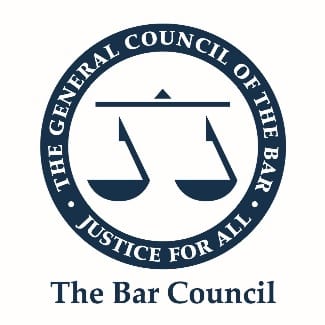Economic Abuse as ‘Conduct’
The Domestic Abuse Act 2021 (‘DAA 2021’) which came into force on 1 October 2021 created statutory definitions of specific forms of abusive behaviour. ‘Economic abuse’ is defined in s 1(4) as ‘any behaviour that has a substantial adverse effect on B’s ability to (a) acquire, use or maintain money or other property, or (b) obtain goods or services’.
Since these provisions came into force there has been much discussion as to whether, and if so in what way, economic abuse and indeed other forms of controlling and coercive behaviour are potentially relevant ‘conduct’ that would be “inequitable to disregard” within the meaning of s 25(2)(g) MCA 1973.
The established position
In S v S (Non-Matrimonial Property: Conduct) [2007] 1 FLR 1496, Burton J listed 13 reported ‘conduct’ cases (at [38]) and continued as follows:
‘[39] … K v K [(Conduct) [1990] 2 FLR 225] apart, all of the conduct found in those cases appears of manifest seriousness. Apart from the statutory provision, and the words of Ormrod J in Wachtel quoted by Baroness Hale of Richmond above, there is a certain amount of recurrent phraseology: “If the courts were in these circumstances not to discharge the order, the public might think that we had taken leave of our senses” (per Balcombe LJ, at 355 in Evans [v Evans [1989] 1 FLR 351]): Sir Roger Ormrod in Hall [v Hall [1984] FLR 631] describes (at 632) the conduct as “gross and obvious” which has “nothing to do with the ordinary run of fighting and quarrelling in an unhappy marriage” and which the judge’s “sense of justice required to be taken into account”: Bennett J in C [*v C *(unreported) 12 December 2001], asks whether “it would be repugnant to any sense of justice for the wife to receive any award at all”. Mr Mostyn QC pointed to the words of Sir George Baker P in W v W [1976] Fam 107, at 110D, when he referred to the sort of conduct which would cause the ordinary mortal to throw up his hands and say “… surely that woman is not going to get a full award”: and, in the course of submissions, he suggested a test of applying what he called the “gasp factor”.’
In OG v AG (Financial Remedies: Conduct) [2021] 1 FLR 1105, Mostyn J identified four scenarios in which conduct may be considered in financial remedy cases. As to ‘gross and obvious’ s 25(2)(g) ‘conduct’ he stated (at [34]) that the authorities ‘clearly indicate that such conduct would only be reflected where there is a financial consequence to its impact’ and (at [35]) that conduct under this head:
‘can extend … to economic misconduct … If one party economically oppresses the other for selfish or malicious reasons then, provided the high standard of “inequitable to disregard” is met, it may be reflected in the substantive award.’
Later (at [72]) Mostyn J states that:
‘The financial remedy court is no longer a court of morals. Conduct should be taken into account not only where it is inequitable to disregard but only where its impact is financially measurable. It is unprincipled for the court to stick a finger in the air and arbitrarily to fine a party for what it regards as immoral conduct.’
Recent developments
In Traharne v Limb [2022] EWFC 27 (31 March 2022), Sir Jonathan Cohen considered the law on agreements in the context of a post-nuptial agreement (‘PNA’) having been entered into by the parties (at [24]–[30]). Having cited from the judgment of Ormrod LJ in Edgar v Edgar [1981] 2 FLR 19 at p25 – where he referred to the fact that
‘regard must be had to the conduct of both parties … all the circumstances as they affect each of two human beings must be considered in the complex relationship of marriage … Undue pressure by one side, exploitation of a dominant position to secure an unreasonable advantage … are all relevant to the question of justice between the parties. … There may well be other considerations which affect the justice of this case; the above list is not intended to be an exclusive catalogue’
– Sir Jonathan stated at [26] that:
‘I have been asked to consider whether coercive and controlling behaviour, if proved, falls within the pre-existing Edgar criteria or whether it represents a new category of circumstances which can vitiate/taint an agreement.’
He answered that question as follows:
‘[27] In my judgment, Ormrod LJ’s words are as relevant now as they were when uttered over 40 years ago. They stand the test of time. Coercive and controlling behaviour would plainly be an example of undue pressure, exploitation of a dominant position or of relevant conduct. It would be part of all the circumstances as they affect the two parties in “the complex relationship of marriage”. If Ormrod LJ were writing his judgment today, he might have employed words such as “coercive and controlling behaviour”.’
It is of note that Sir Jonathan then records that the parties agreed that in considering the allegations of H’s behaviour (i) the test for the court is whether objectively his behaviour was coercive and controlling (ie for it to fit within the definition of coercive and controlling behaviour it must objectively meet that description and it was immaterial whether H intended his behaviour to have an effect on W); and (ii) subjectively, that same behaviour must have the effect on W of depriving her of the ability to enter into the PNA of her own free will.
And now we have DP v EP (Conduct; Economic Abuse; Needs) [2023] EWFC 6 (10 January 2023) per Her Honour Judge Reardon, where the answer to the question whether economic abuse can amount to conduct within the meaning of s 25(2)(g) was said to be ‘yes’. At [147] the judge found that W’s conduct fell within the definition of economic abuse contained in DAA 2021. She stated:
‘In the longer term, if not on a day to day basis, W’s conduct has had a substantial adverse effect on H’s ability to access and use his own money … I appreciate that there are some forms of economic abuse, for example those that involve the coercive restriction of the other party’s day-to-day expenditure, that may be more familiar, and therefore more easily recognised as abusive. However W’s conduct in this case involved the exploitation of a dominant position, which is the essence of all forms of abusive behaviour; and the fact that H was unaware of W’s behaviour at the time, and that it did not directly impact on his daily life during the marriage, has only made his subsequent discovery of it more shocking. I am in no doubt that H feels a profound sense of betrayal, and that the harm caused by W’s actions has extended well beyond the financial detriment they have caused.’
This appears to be the first case where ‘economic abuse’ has been found to be s 25(2)(g) conduct. As the judge said at [149]:
‘The provisions of DAA 2021 are quite new and their role in financial remedy cases is yet to be established. Undoubtedly not all cases involving economic abuse will have the “gasp factor” required by MCA 1973, s 25(g). In concluding that this one does, I draw on my range of experience of the behaviours exhibited by spouses towards each other, within their financial relationships and otherwise. In my view the features which take this case out of the ordinary include H’s illiteracy and W’s exploitation of his consequent vulnerability; the deliberate nature of the deception perpetrated by W; and the fact that the behaviour was sustained over a considerable time period.’
It is for these reasons that the judge considered that W’s conduct as a whole was such that it would be inequitable to disregard it.
Future developments
It will be interesting to see how this area of law continues to develop and how the courts address the question of ‘how that conduct should be reflected in a jurisdiction whose scope is limited to the distribution of financial assets, and whose exercise is governed by a variety of factors drawn from statute and case law’ (as it was put in DP v EP (Conduct; Economic Abuse; Needs) at [149]).
This remains an unsatisfactory area of the law. In S v S *(Non-Matrimonial Property: Conduct) *Burton J observed (at [41]) that ‘[t]here is no real guidance as to what would be the effect if I concluded that there has been such conduct by the respondent as it would be “inequitable to disregard”‘. He then referred to two modern approaches of first instance judges with the caveat that “they may neither of them comply with what the court is intended to do under s 25 of the 1973 Act”, namely (i) Al-Khatib v Masry [2002] 1 FLR 1053 where Munby J (as he then was) stated that ‘conduct’ could drive him to ‘the very top end of the applicable discretionary bracket applicable to the case’; and (ii) H v H (Financial Relief: Attempted Murder As Conduct) [2006] 1 FLR 990 where Coleridge J stated that the court should not be punitive or confiscatory for its own sake but that the ‘conduct’ is:
‘a potentially magnifying factor when considering the wife’s position under the other subsections and criteria. It is the glass through which the other factors are considered.’
The exercise by the court of such a sweeping power without clear guidance has long been of concern. This will become ever more so given the likelihood of more arguments (and hence more findings) of economic abuse and coercive and controlling behaviour more generally in the months and years ahead.





